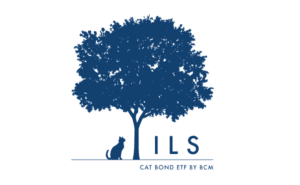Transactional liability insurance – an M&A mainstay

Transactional liability insurance – an M&A mainstay | Insurance Business America
Insurance News
Transactional liability insurance – an M&A mainstay
Coverage has become a mainstay in M&A transactions in recent years
Insurance News
By
Chris Davis
Tim Grosso, managing director at Euclid Transactional, recently chatted with Insurance Business to provide a detailed overview of transactional insurance, particularly focusing on representations and warranties. He delved into the trends and evolving landscape of this niche area, reflecting on its journey and growth.
“I became interested very quickly in transactional liability insurance, and particularly the subset of rep and warranty insurance. That’s what we call it here in North America. Over in Europe, it’s been around for a bit longer, and they call it warranty and indemnity insurance. But, you know, similar concept,” Grosso said, recalling his introduction to the field during an internship at Dechert LLP in 2014. At that time, the concept was still relatively new, especially in the middle-market private equity M&A space, where it first gained traction in the US.
Grosso said the traditional method of handling M&A transactions involved setting aside a significant portion of the purchase price in an escrow account to cover potential breaches of representations made by the seller.
“That’s really an inefficient use of capital because that money is just sitting there,” he said.
This method also created uncertainty for sellers, who often were unaware of any inaccuracies in their representations. The introduction of rep and warranty insurance addressed these issues by allowing sellers to take their money and walk away with certainty, while buyers were protected by the insurance policy.
“We can go in, we can review those representations,” Grosso said. “Generally, we’re contracting with the buyer, so we’ll review all their diligence, have a call with them and their client, really understand the background of the transaction.”
This process allows Euclid Transactional to issue a policy that covers the representations made in the transaction, excluding known issues. He noted that fraud by the seller is one exception where subrogation rights could be pursued, although this is rare.
An M&A mainstay
Reflecting on the evolution of the product, Grosso noted that it has become a mainstay in M&A transactions, especially post-2018.
Over time, coverage has broadened as underwriters have become more familiar with various businesses and products. The COVID-19 pandemic initially slowed M&A activity, but the market rebounded strongly, leading to one of the biggest boom cycles in 2020 and 2021.
This boom led to capacity constraints and increased rates in late 2021. However, the subsequent influx of new market entrants in 2022 and 2023 resulted in a decrease in pricing and a broadening of terms. “It really is a great time to be a buyer in this market right now,” Grosso said.
From tax accountant to transactional liability
Grosso’s journey from a tax accountant at Ernst & Young to law school and eventually into the specialized field of transactional insurance provides valuable insights for professionals considering a similar path. “I was always fascinated by law,” he said.
His experience at Ernst & Young, where he worked closely with lawyers on tax structuring and regulatory matters, reinforced his interest in the legal aspects of transactions. This led him to pursue law school and subsequently focus on M&A, where he found his niche in transactional insurance.
“Our insurance is mostly focused on ensuring the representations made in an M&A transaction. We also have a rapidly growing tax team, which is another really interesting area of transactional liability insurance,” Grosso said. The tax team focuses on underwriting policies that cover the outcomes of discrete known issues, providing clients with peace of mind regarding their tax positions.
The impact of technology
Discussing the impact of technology on transactional insurance, Grosso acknowledged that while the industry is not yet at the stage where policies can be generated solely through technology, significant strides have been made.
“Technology is only as useful as the data that goes into it,” he said.
Euclid Transactional leverages a solid base of data gathered over years of underwriting transactions to inform their decisions. The company’s first claims study, released recently, dives into this data, offering valuable insights.
The growth of Euclid Transactional’s team, especially during the M&A boom from 2020 to 2021, has also been supported by advancements in remote working tools.
“We were able to utilize those as we grew, which helped maintain our consistency,” Grosso said.
These tools have enabled the company to continue providing a high level of service, even as the team expanded rapidly.
Looking ahead
Grosso anticipates interesting times ahead as new market entrants navigate the challenges of claims. “With the new market entrants, it’s to be seen how everyone’s going to respond to claims,” he said.
He believes that clients, becoming more familiar with the product and its value, will continue to seek out established markets with proven track records.
“Our carrier partners have paid over $800 million in claims [during] our over eight-year history. We’ve also had minimal turnover on our team, providing the added benefit of organizational continuity,” Grosso said.
Related Stories
Keep up with the latest news and events
Join our mailing list, it’s free!






